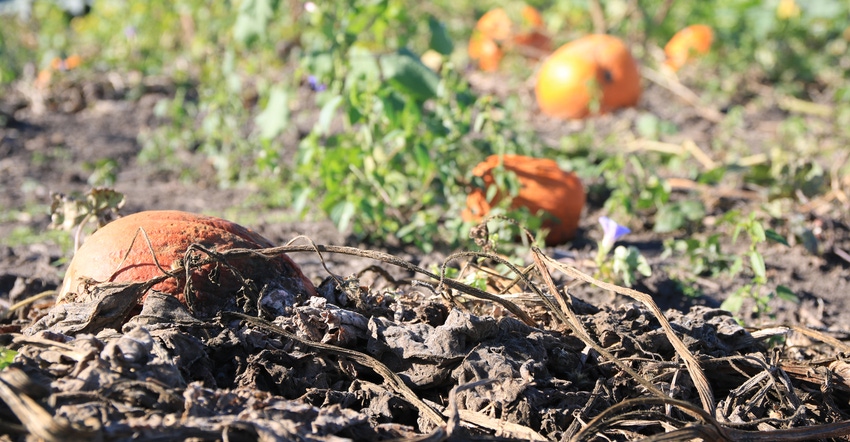
Illinois is getting better at growing pumpkins. While a full harvest report for the 2019 canning crop isn’t available yet, 2018’s record average of 27 tons of pumpkin per acre exceeded the 23-ton historical average.
Reports of above-average yields coming through Libby’s canning plant in Morton this year fit a historical trend for higher yields. Despite rain delaying planting from April to June, the dry and warm conditions in July and early August gave pumpkins the environment they needed to catch up.
And in 2019, luck played a roll, too: Downy mildew never made its way into the southern U.S. If spores had been sighted, a taskforce calls on pumpkin growers thousands of miles away to start spraying.
University of Illinois plant pathologist Mohammad Babadoost says the development of integrated pest management plans against pumpkin’s major diseases is what’s thrust the trend in yields so high.
“Yields are increasing, particularly when we are really taking care of the diseases well. The pumpkin fruit we’re growing are marketable, they’re larger, and there’s more of them,” Babadoost says, adding pumpkin patches also have to contend with the same diseases.
Bacterial spot
While tactics are ready to be deployed for downy mildew, another disease called bacterial spot is emergent, sporadically showing up with increasing severity since 2006. It isn’t understood well enough for Babadoost’s lab and others to create a management plan yet.
“In 2019, because of the dry conditions in July, this disease came up in fields that had a history of bacterial spot and also were moist. But it was not as bad as last year or before because of dry conditions,” he says. “This year, it's a problem, not a huge problem, but we're still working up a management plan.”
Phytophthora blight problems
A well-known disease on pumpkins over the last 25 years, phytophthora blight, has become more manageable since a devastating couple of years at the turn of the century, where yields on some fields were impacted close to 100%.
The yield impact of phytophthora blight has been reduced to an almost negligible level, with less than 10% losses in the research trials his lab tracks near Morton.
The management plan that accomplished this is multi-pronged, starting with a cheap seed treatment that protects the seedling from infection for the first five weeks. As the season progresses, farmers have to scout for infected pumpkins and remove or disk them into the soil. And since it’s a soil-borne pathogen, crop rotation helps in almost zeroing out inoculum after four years.
“Then we have several effective fungicides that we did not have in 1999. Over the years, we tested them, and we've found a list of five or six effective fungicides that when used in combination, in alteration, take care of it during the remainder of the season with anywhere from three to six applications,” Babadoost says, noting the earlier the disease is detected, the sooner farmers should start applying.
Powdery mildew
Another disease present in all cucurbits, including pumpkin, is powdery mildew. It is an animal disease that doesn't have to be coming from the South; it could come from anywhere. It could survive in the greenhouse or in a home plant.
“No matter what, we're going to have powdery mildew on pumpkins roughly beginning July 20 in Illinois. And while we do have some resistant varieties, they're not really immune. They're just less susceptible to powdery mildew,” Babadoost says, adding farmers have no choice but to apply fungicide when fighting the disease. But with a maximum of four applications, yield losses go down to a negligible level.
About the Author(s)
You May Also Like




